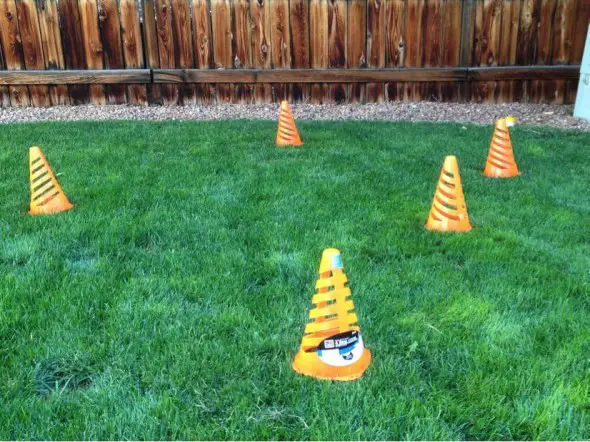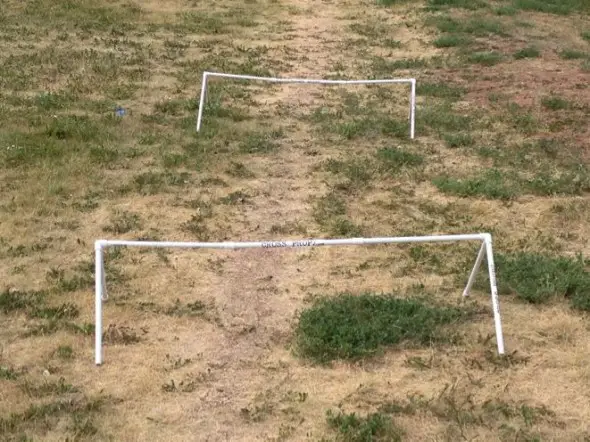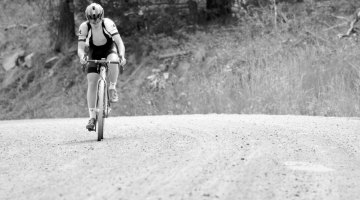by Josh Schwiesow
It is getting to be that time of year when even the most serious road racers begin talking about cyclocross season. There is plenty of time yet, but by now the trajectory of the season has been largely determined and folks are looking forward to a fun beginning of the cyclocross season.
As such, many people are looking to get a leg up or gain some sort of advantage for cyclocross season. This is where the cyclocross clinics come into play.
The idea of attending a cyclocross clinic is a well-endorsed one for the cyclocross noob, and I had enough insight smart enough friends to drag me along to several last year. In fact, this idea is Cyclocross Magazine’s Tip #1 for beginners.
There are several ways to take part in a cyclocross clinic. Most teams put on their own. The problem is that the beginning cyclocross racer may not be on a team. Finding a crew to ride with could be the subject of another column, but even beginners should not rule out this option. Ask around among the local bike shops and your cycling friends. The same local bike shops may put on their own clinics, or may be able to refer you to other resources for finding a clinic. Many cycling communities simply have cyclocross group rides/informal clinics that can be found via your local cycling websites or internet search engines.
A convenient way to get a cyclocross clinic in when calendars don’t align perfectly is to run your own! This gets right at Cyclocross Magazine’s Tip #4 for beginners. Grab a few friends, if possible, and set up your own practice. Cyclocross courses are not NFL fields – they aren’t standard in every way. In fact, locations that have dedicated cyclocross courses tend to change them up even for a weekly race series to keep things interesting. Therefore, you don’t need an “official” cyclocross course (and yes, there are official parameters for various governing bodies in cycling) to practice cyclocross effectively. The local bike park, a school playground, a football/soccer field or even your own backyard can make for a great spot to practice. A beach, beach volleyball court, or a playground with a large sandbox will allow for some great practice as well!
So, what do you need? Truthfully, not much. Beyond your bike, all you need are some cones, some grass, some barriers and maybe some dirt, sand, or rocks. Then you are all set!
For about $1 each, I picked up some cones at the local sporting goods store. Meant for soccer practice, I expect the Franklin corporation would be pleased to know that their orange cones can serve other recreational purposes as well.
In his book, The Complete Book of Cyclocross, Scott Mares describes and illustrates various drills for improving bike-handling skills. This book typically doesn’t get the accolades that the Simon Burney book does, but I would opine that for a beginner, such as myself, the books are actually quite complementary. Several drills involve cones, and at $4, you cannot go wrong unless you do not practice.

Even a small section of your backyard can be a spot to practice cyclocross skills with some grass and some cones.
The next “must have” would be barriers. Every cyclocross race I’ve done has had barriers, and unless you are Jeremy Powers, you’ll be dismounting, hopping, and remounting.
You can make your own barriers, and Cyclocross Magazine editor Molly did just that last summer. PVC-based barriers are clearly superior for practice rather than staked wooden “race style” barriers. They are far more portable, and if you decide to practice the bunny-hop, the price of failure isn’t high. Molly noted that for $15 and 15 minutes, you can create your own lightweight and portable PVC-based barriers. When she wrote this article, I remember being inspired to try to make my own.
However, that inspiration soon waned as I realized I do have something of a lazy streak, and her last paragraphs spoke to me even more. I decided to buy some Crosspropz, which were also reviewed last summer. (Disclosure: I know Crosspropz owner Paul McCarthy through another cycling discipline. He is a great supporter of the local cycling scene and so I also wanted to support that!)
Having used both styles, the reason I liked the Crosspropz better than the homemade version is due to the “A-framed” ends rather than the “T-shaped” ends, as they’ll allow the barrier to tumble over less dramatically if you hit it. You could create your own homemade ones in this style if you wanted, but the Crosspropz with their “tent-cord” are quick and convenient. Additionally, what I personally like about the Crosspropz is how easily they fold up into their bag requiring minimal storage in the back of the car so you can practice at any time. If I may make one more plug – everything in the Crosspropz online store is on sale now! Therefore, the prices are even better than those noted in the previous review.
Next time, we’ll see how Josh’s at-home “clinics” are helping him prep for the season.
Here’s the Noob Hand-Up:
- Now is the time to start developing your skills. Motor is only half the battle.
- Practice can occur in a variety of different locations, such as parks and backyards.
- Skills drills can improve your bike handling.
- A minimal amount of investment in toys & tools for practice can gain seconds or minutes over a full race, or race season!






























